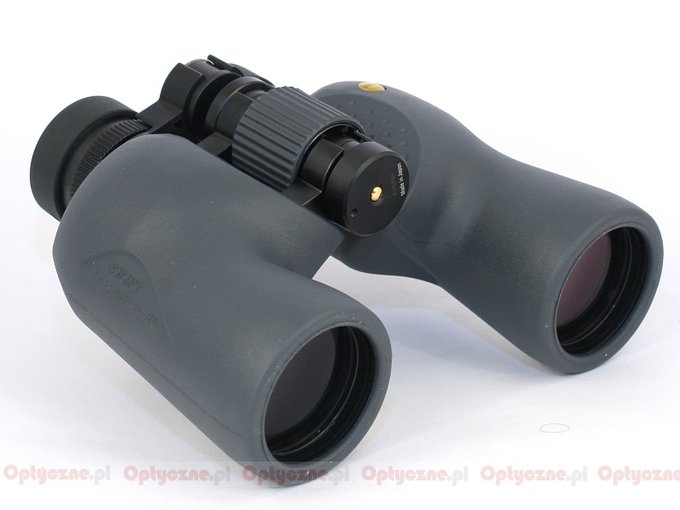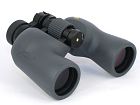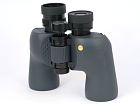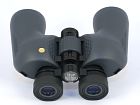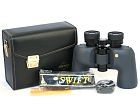| Real front lens diameter |
Left: 43.83+/-
0.05 mm
Right: 43.78+/-
0.05 mm
|
7 / 8.0 pkt |
| Real magnification |
8.82+/-
0.15x
|
3/3.0 |
| Transmission |
85+/-
3%
|
12.5/25.0 |
| Chromatic aberration |
Medium in the middle and at the edge. |
5.3/10.0 |
| Astigmatism |
Between low and medium. |
6.8/10.0 |
| Distortion |
The distance of the first curved line from the filed centre compared to the field of view radius: 34% +\- 4% |
3/10.0 |
| Coma |
Medium. |
5.5/10.0 |
| Blurring at the edge of the FOV |
The blur occurs in the distance of 75% +\- 5% from the field of view centre. |
4/10.0 |
| Darkening at the edge the FOV |
Noticeable. |
3/5.0 |
| Whiteness of the image |
Slight yellow. |
3.6/5.0 |
| Collimation |
Idealna. |
5/5.0 |
| Internal reflections |
| Left: |
Right:
|
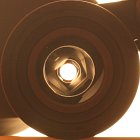 |
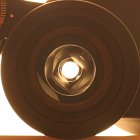 |
Very noticeable. |
1.2/5.0 |
| Housing |
The barrel is solid and comfortable to hold. The eyecups are rather uninteresting – plastic and loose. |
7/8.0 |
| Focusing |
Central screw moves comfortably and smoothly (700 degrees). The bridge’s action is even and putting some pressure on it doesn’t defocus the device. There’s slight lateral “play” of the eyepieces. Individual focusing is comfortable but it moves the lens. |
4/5.0 |
| Tripod |
There is a convenient exit. |
3/3.0 |
| Interpupilary distance |
from 55 to 71.2mm
|
2/6.0 |
| Closest focusing distance |
2.8 m |
1/2.0 |
| Eyepieces FOV |
Apparent field of view of 69.1 deg (according to simple formula) and 62.3 deg (according to tangent formula). |
15.5/20.0 |
| Field of view |
Measured by us amounted to 7.84 +\- 0.03 degrees and it was by as much as 0.36 degree narrower than in specifications. Nevertheless the field is very wide for this equipment class. |
5/8.0 |
| Quality of the interior of the barrels |
Tubes are black and matt. The bottom is light and gray. Very small specks of dust. White glue. |
4/5.0 |
| Vignetting |
| Left: |
Right:
|
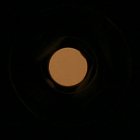 |
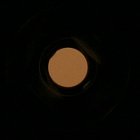 |
OL: 1.4%, OR: 1.4% |
6/8.0 |
| Prisms quality |
Good quality BaK-4. |
8/8.0 |
| Antireflection coatings |
Green on the objective lenses. Purple on the prisms. Green-purple on the eyepieces. Low intensity. |
5/5.0 |
| Warranty [years] |
25 years |
5/6.0 |
| Final result |
66%
|
125.4 / 190 pkt
|
| Econo result |
|
0pkt. |
Summary
Pros:
- solid barrel,
- wide field of view,
- good transmission,
- good quality of prisms and coatings,
- good blackening and cleanliness inside,
- slight astigmatism.
Cons:
- visible flares,
- not very comfortable eyecups,
- blurred edges of the field of view,
- the maximum IPD too narrow.
This set of binoculars is very similar to the model with ED lenses, produced by the same company. We still managed to find some differences, though. First of all, we noticed higher chromatic aberration and lower transmission in the model without low-dispersion glass. The later fact arises from the usage of different coatings on objective lenses’ elements (their colour is different than in the ED model).
The rest of the properties is very much alike. The binoculars without ED glass were more clean inside and its ocular bridge was more stable. However, these kinds of properties vary according to the specimen so we are sure you can easily find them also in other ED series models.
The price difference between the two Swifts amounts to 200 USD. Is it really worth paying more for significantly lower chromatic aberration and better transmission? Everybody must answer this question on his or her own.




